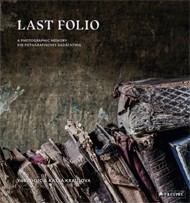Gay Block’s collection of photographs is aptly titled; the emotions most of her images evoke, the sense of what Block felt as she took them, are admiration and affection. These shots of families, children, elderly people, working people, and rescuers during the Shoah are shots of real people, taken in their natural environments: living rooms, bedrooms, beaches, swimming pools. The photos are posed but candid-looking; there’s a real sense that Block has captured something essential about her subjects.
Block began shooting when she was in her early thirties, in the 1970s, taking photographs of her mother in an attempt to understand their difficult relationship. She moved on to interviewing and then photographing families in her Houston Reform Jewish community, also in an attempt to understand.
Included with the book are a series of five short documentary films on two DVDs, the first of which, A Tribute to Spirit: The Beth Israel Experience, chronicles the history of the European Jews who first came to Houston in the 1800s. Block recounts the community’s transition from Orthodox to Reform, and how and why Houston’s Jews were driven to assimilate and obscure their Jewishness.
Her South Beach photos, taken in the early eighties, are all in color, capturing not only the blues of sky and sea, and the pastels of Miami’s Art Deco architecture, but the bright, colorful patterns of her subjects’ clothing. Her lens shows the elderly enjoying camaraderie on the beach and on benches and lawn chairs. In the accompanying video, A Bie a Gesunt (As Long as You’re Well), Block interviews these Yiddish-accented Jews of South Beach, living in small apartments on Social Security. She captures them singing, dancing, playing instruments, and doing calisthenics on the beach. I felt that I was seeing their secret lives of joy that the young are not usually privy to.
In the late eighties, Block interviewed and photographed one hundred and five rescuers of Jews during the Shoah. The twenty-four portraits chosen for this book of these heroic and extraordinary people are accompanied by a video, They Risked their Lives: Rescuers of the Holocaust, which consists of revealing interviews with the rescuers.
Another series of photos were taken in 1981 of girls who attended an elite secular Jewish summer sleep-away camp in Maine, and then of the girls as women twenty-five years later, in 2006. The early photos show the campers exuding ennui, awkwardness, and in a couple of shots, a consciousness of their own beauty. As for the latter images, they’re less striking on their own, likely because, as Block acknowledges, they are women in their thirties and forties and very conscious of wanting to look good. Block would have preferred, she says, to go a bit deeper. It is fascinating, though, to see the woman in the girl and the girl in the woman. In Camp Girls, the video, these women speak about their memories and feelings about camp, and about how the photographs make them feel now.
Her last series of photographs spans from 1985 – 2005 and includes photographs of her mother, of an array of working class people at their jobs and at leisure, of several female spiritual leaders, and of lesbians, transsexuals, and drag kings. The latter photos are no more sensational than the earlier ones; they are just photos of people whose essence Block is trying to capture.
An additional video on the DVDs, Bertha Alyce, about Block’s complicated relationship with her mother, is discomforting, disturbing, and moving.
About Love would stand strong on its own, and so would each of the series of documentary videos, but together they are a uniquely moving and powerful experience.

Visual Arts
About Love: Photographs and Films 1973 – 2011
- Review
By
– March 27, 2012
Eric Ackland is a freelance writer.
Discussion Questions

Jewish literature inspires, enriches, and educates the community.
Help support the Jewish Book Council.



